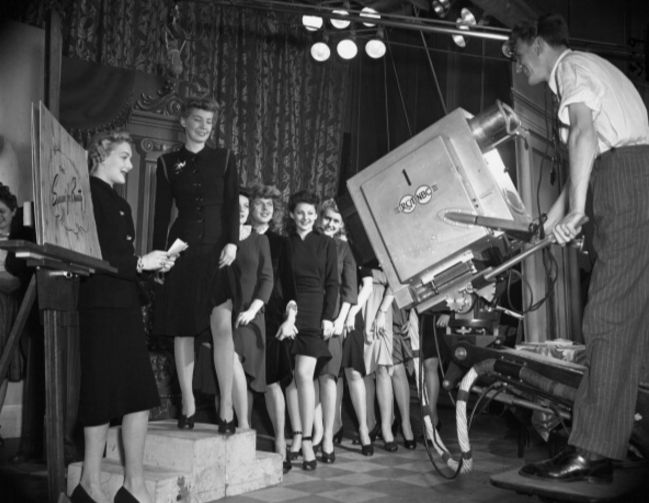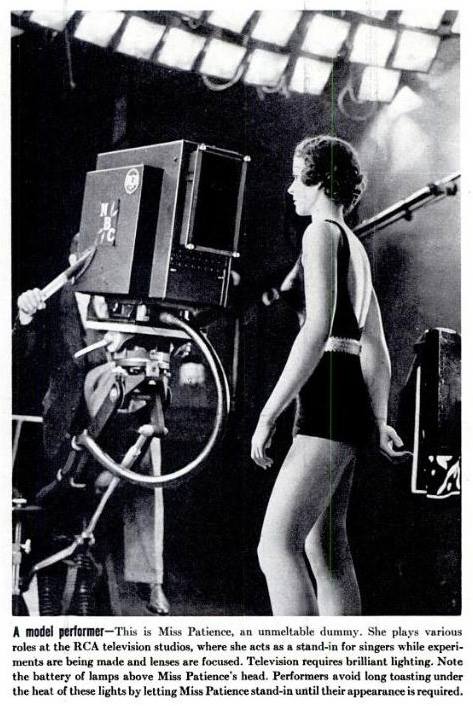RCA’S FIRST ICONOSCOPE CAMERAS & THE PROTOTYPE
We will see three different Iconoscope cameras here…the first three all electronic cameras made by RCA at their Camden N.J. labs. These images are from the David Sarnoff Library Collection and are quite rare these days.
The first we’ll see will be the prototype camera developed by Dr. Zworykin around 1932. The second is a more sophisticated model that RCA introduced in 1934 and the last camera is the “icon” of early cameras, the one some refer to as the A500, which was first used in RCA/NBC experimental Studio 3H at Rockefeller Plaza. I would like to suggest that from here on out, we all refer to those hard-bodied cameras as the Studio 3H Iconoscope cameras.
RCA ICONOSCOPE PROTOTYPE CAMERA
If you look closely at the bottom of the camera, notice the rubber feet…items that suggest this sits on ‘something’ and we’ll see that something a few images down.
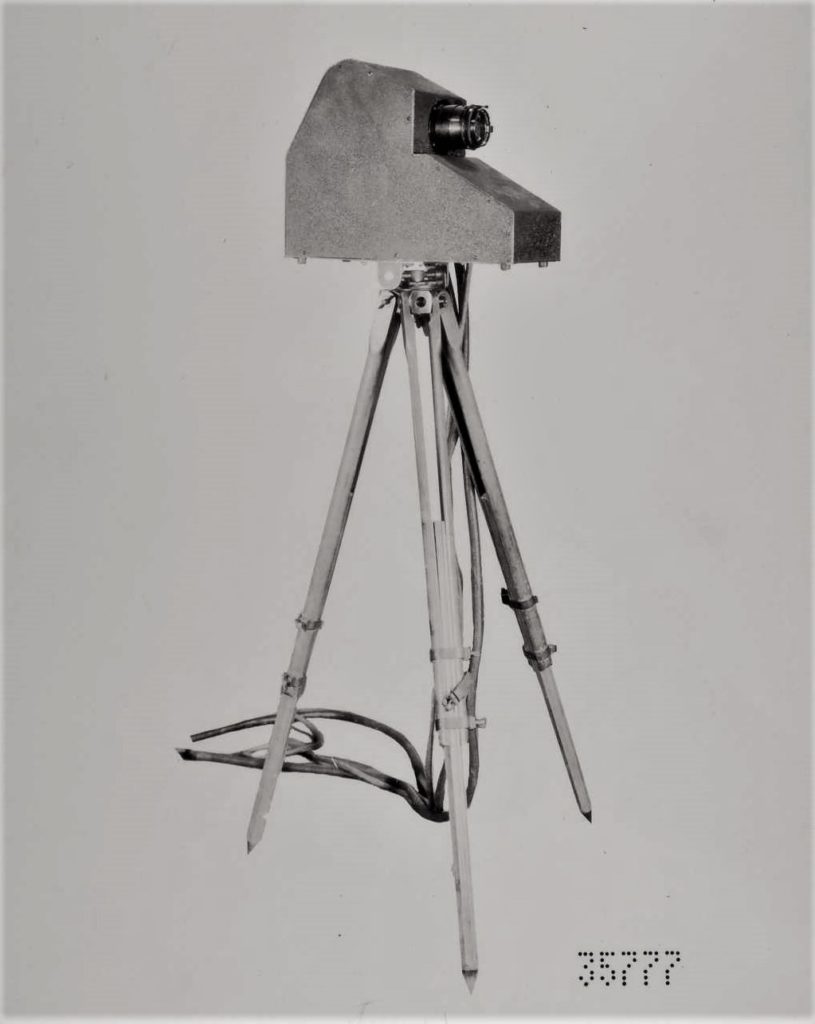
Below is the first ever shot of an electronic RCA TV camera with it’s camera control unit
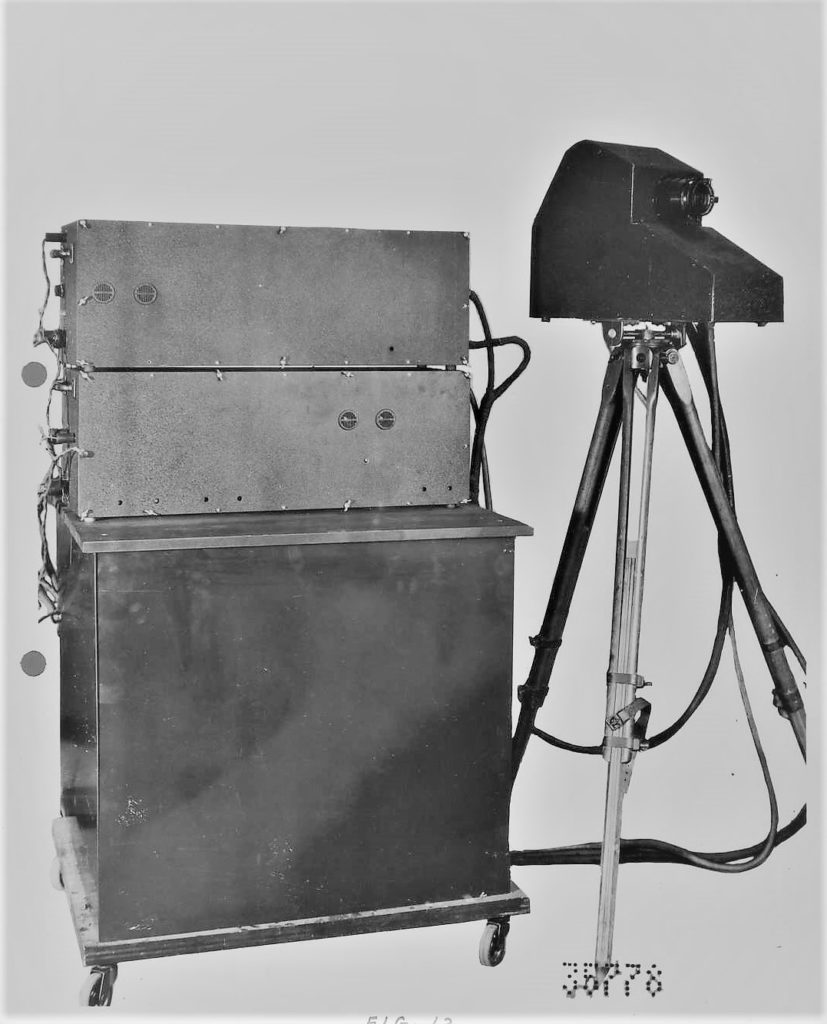
Below is the paragraph from the RCA Broadcast News article (you’ll soon see) which describes the camera and configuration above, which is the original image that was photographed for the magazine article by Dr. Zworykin.
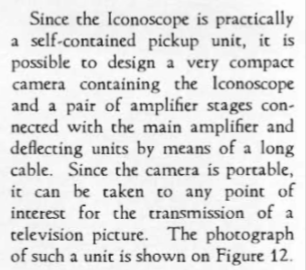
Here is the ‘something’ the camera sits on and the camera we see above is on the left. The unit it is sitting on is basically ‘the control room’ with all the components neatly packed together on this convenient rolling rack, so it is also a ‘remote unit’ of sorts since they can take it from lab to lab to experiment. Up top, in front of the camera there seems to be an experiment in progress as the prototype is shooting into a microscope with a light source shooting from the other side of the microscope’s slide table. Although this is an electronic system, it seems to have rotating mechanical disc at the light source, used for generating synchronizing pulses. As electronics progressed, less and less mechanical means were necessary to get a good stable image. It would be interesting to see the result of this experiment, which is possibly being conducted to see if there is a medical use for the new apparatus.
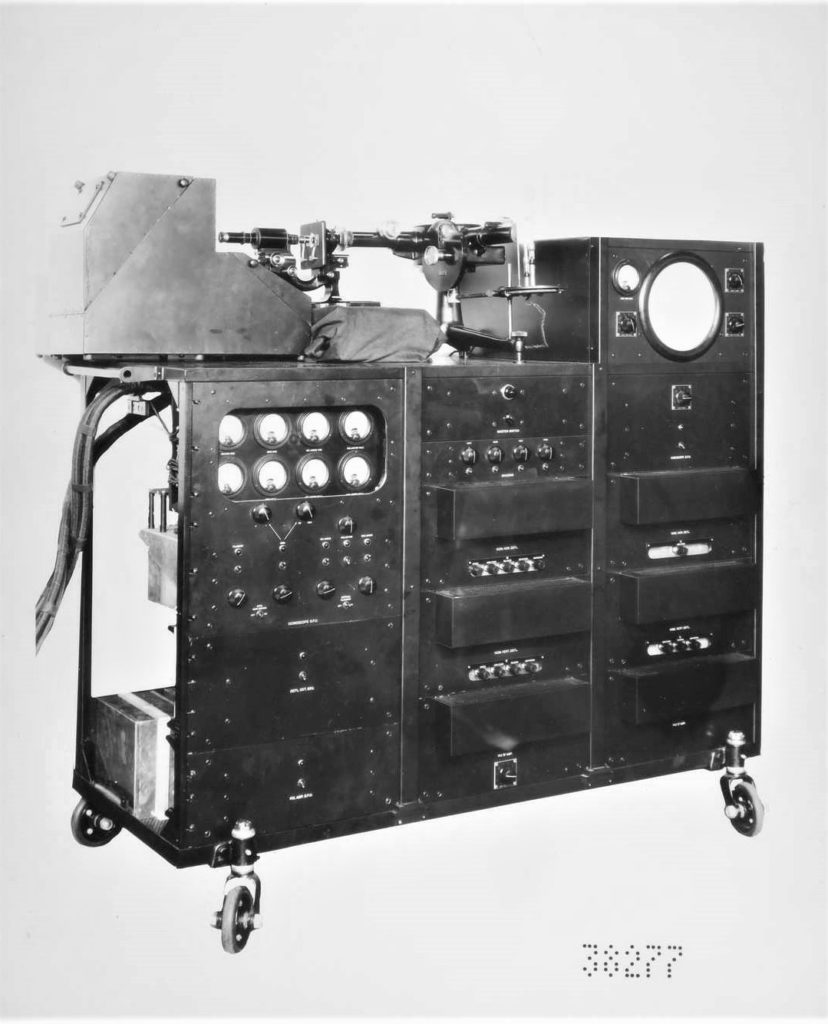
Before we move to the second camera, here is the August 1933 edition of the RCA Broadcast News magazine I mentioned with an 8 page paper on the new Iconoscope Tube by Dr. Vladimir Zworykin, the tube’s inventor. On pages 6 – 14 he describes the technology in detail and the image of the camera above is shown here on page 13 with it’s description on page 12.
THE FIRST RCA ICONOSCOPE CAMERA
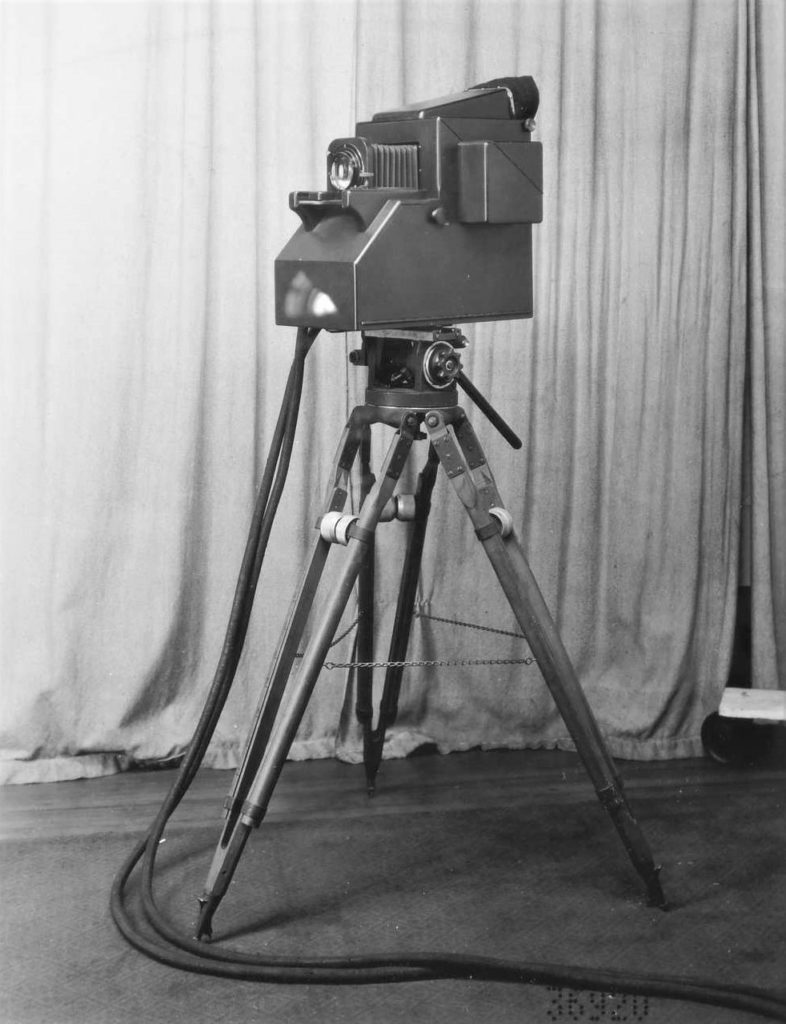
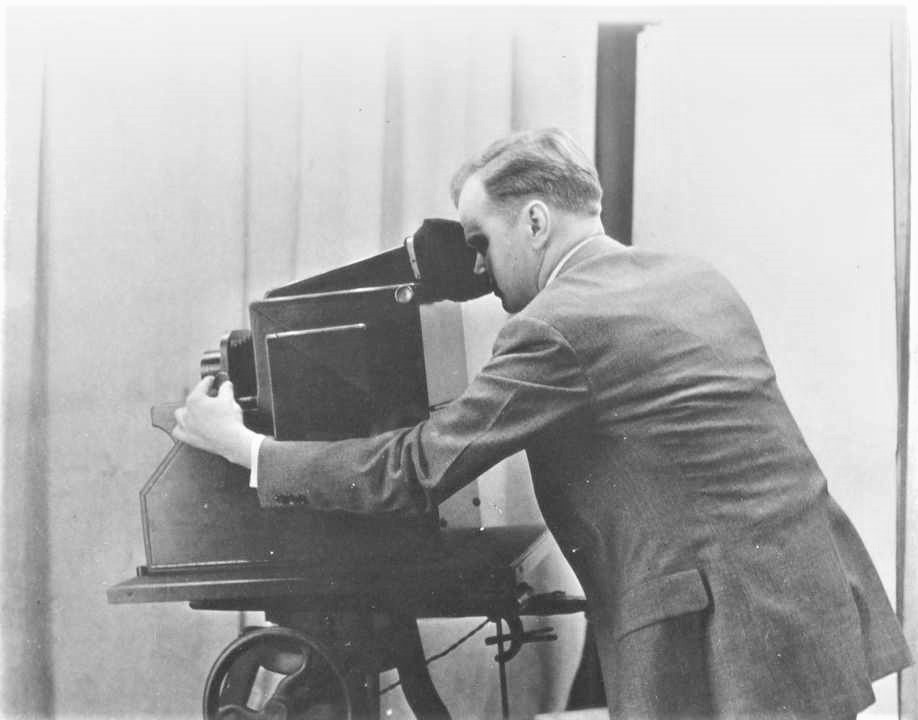
Above are two shots of the camera in testing at RCA’s Camden N.J. labs. Notice there is viewfinder on this model very similar to the kind you find on photographic cameras which is an optical viewfinder made of ground glass which captures the image from the lens.

![]()
Above left we see the interior in a nice clear shot and on the right a helpful labeling of the parts. We know the date of this camera because of the date on this photo from Dr. Zworykin’s photo albums that he kept at work to record events. This is RCA’s Lesley Florey in early tests to the camera in 1934 at Camden, but we think this was in use in 1933 too. Notice the tube is bubble shaped, but as resolution increased the tube became more drum like.
![]()
Below is a 1937 article that shows this same camera at Philadelphia experimental station W3XE which was owned by Philco. Philo Farnsworth was there in the mid 1930s, but competition was fierce and trade secrets were held close to the vest. Some former RCA engineers had come to work there in the early 1930s when RCA refused to sell any of their iconoscope tubes, and they began making their own tubes.
When RCA set up their experimental Studio 3H at Radio City in the spring of 1935, they had an all new camera design (which we’ll see next) and once 3H had been in operation for a while, Philco convinced RCA to sell them their bellows lens cameras (of which I believe there were two) to use in their W3XE station. Below is an article from 1937 that shows the RCA camera in use there. I included this image and info to help with any confusion with seeing the same camera at two different places.

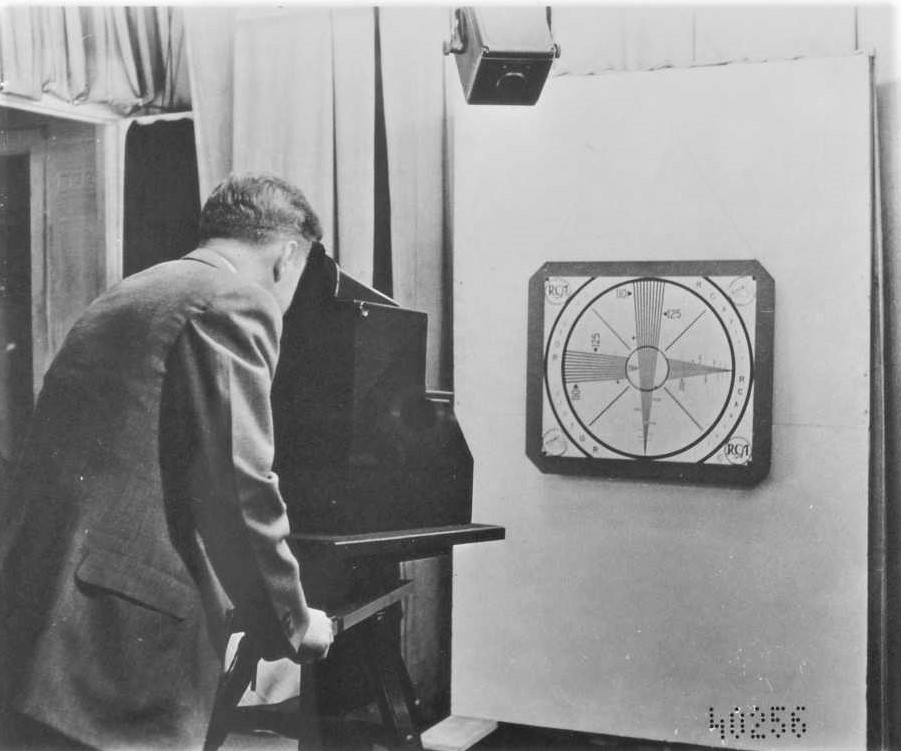
Above we see the camera shooting a test pattern in Camden and below, a transmitted image of this pattern in 1933.
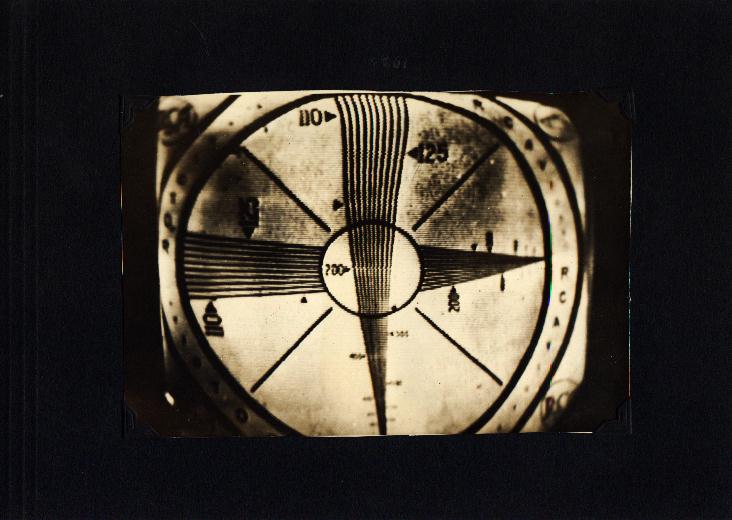
THE 1935 RCA STUDIO 3H ICONOSCOPE CAMERA

Above, the very first all electronic television studio…RCA Studio 3H at NBC’s 30 Rockefeller Plaza. In 1937, RCA transferred control of the studio to NBC Television, but until the mid 50s, there was usually some kind of testing going on in this space, along with programs originating here like Howdy Doody. As a matter of fact, when Howdy started December 27, 1947 the show was shot with these very cameras. Only after Studio 8G opened in June of ’48 did Studio 3H get three new RCA TK30 Image Orthicon cameras.
There were three of these hard bodied camera in Studio 3H and most of the time, at least one of the cameras was mounted on a Panoram dolly. In-fact the one shown here in the second image down may be a prototype as it has a nice wooden footrest/step up for the cameraman, the wheel base is longer and the rotating section is more centered in the chassis than the versions we see in the late ’40s and ’50s.
NOTICE AS WE GO! This is a “dating” trick of mine that gives me an idea when photos were taken. NOTICE on the photos above, there is a round RCA decal and below it is a square NBC decal, which are the original markings of these cameras. When you see that you know the photo was from about 1935 till 1937. After ’37, the round NBC decal was there and many times the second (or low viewfinder port) is sealed as in the image below.
Keep in mind, the camera bodies are the same three that were built in 1935…even the silver versions. All that changed was the internal workings and especially the Iconoscope tube’s resolution. These cameras started with 345 lines of resolution with their original dressing, then when they went to 441 lines, the camera art changed to the round NBC logo and the bottom viewfinder port was sealed. The silver on these cameras at NBC (and the ones they sold to CBS) occurred when the 525 line tubes came along on July 1, 1941.

The next image shows you the removeable lens plates that snap on and off for quick changes in the studio when a close up or wide shot is needed.
![]()
Here is the interior of the camera that shows you just how the optical (ground glass) viewfinder worked and where the tube was.
![]()
One of the big drawbacks to the optical viewfinder was the impossible upside down and backward image the cameraman had to deal with. To him, the voice command of left, meant right and up meant down!
![]()
In this image below, notice the 345 line Iconoscope tube is very bubble like which marks this as the original tube style in these cameras. If you are confused, these opened from the back and tilted up to get to the interior components.
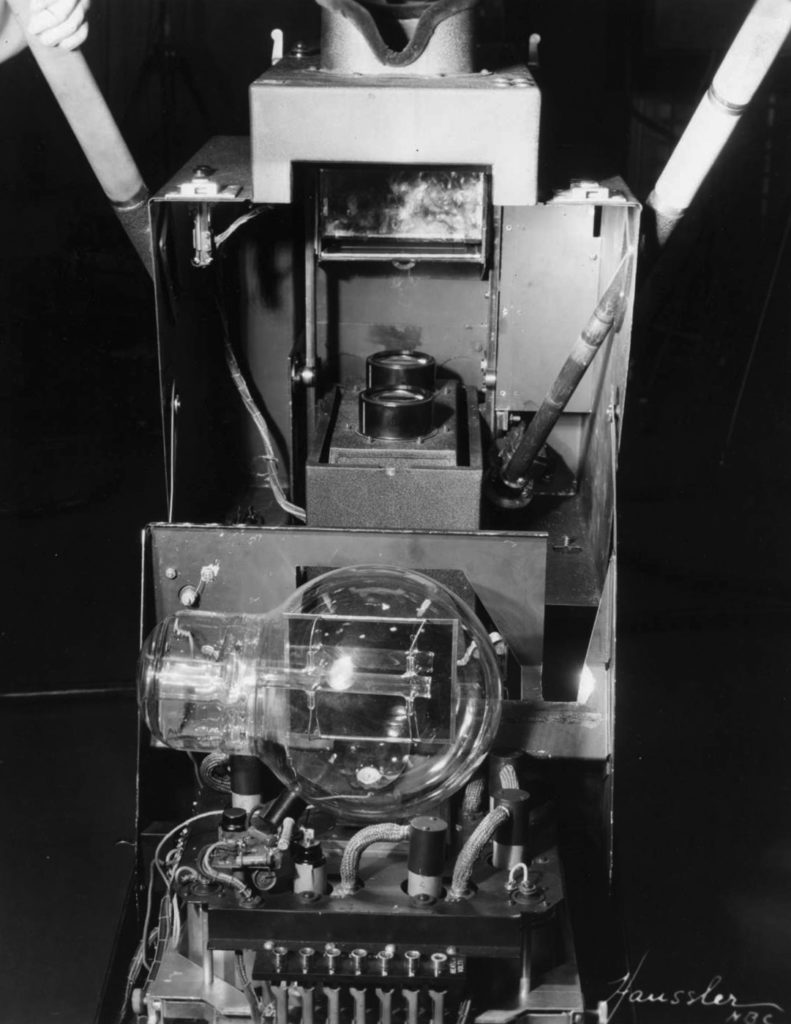
Notice in the image below, the bottom viewfinder port is gone and the Iconoscope tube is now the very familiar drum shaped tube we think of as the “normal” shape for these instruments. This image may be from around 1939 and shows a 441 line resolution setup.
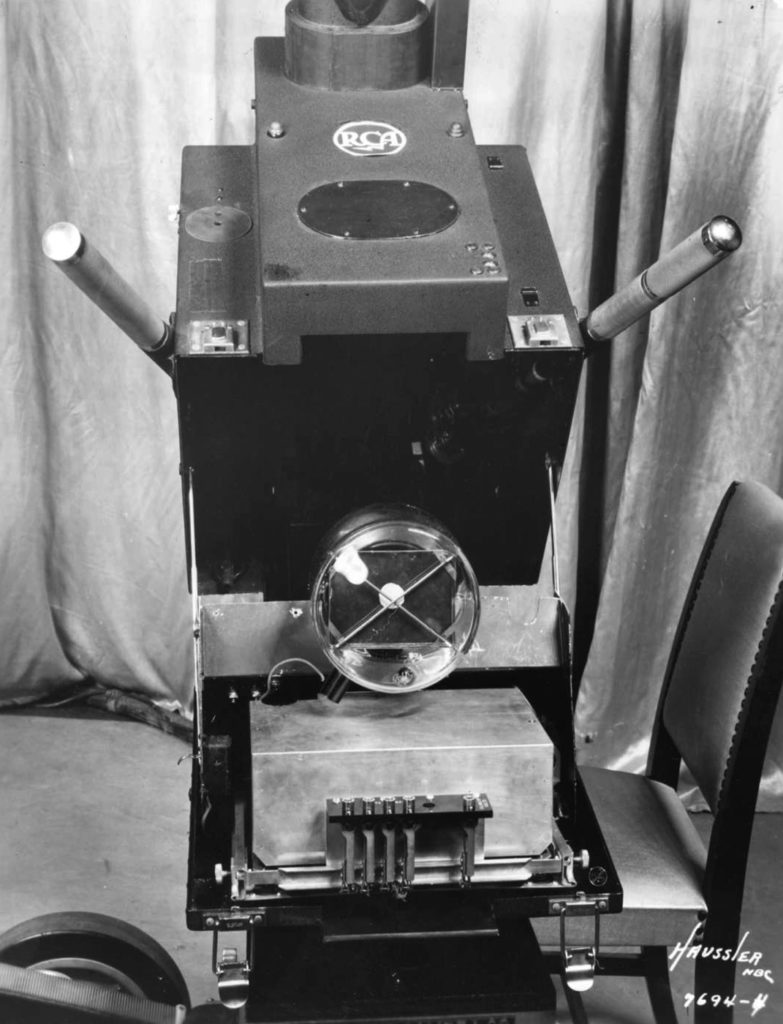
If you thought Felix The Cat camera models went out with mechanical television, think again! Here is a photo shot off the monitor in Studio 3H on February 5, 1937 showing how he looked with the new 441 lines of resolution.
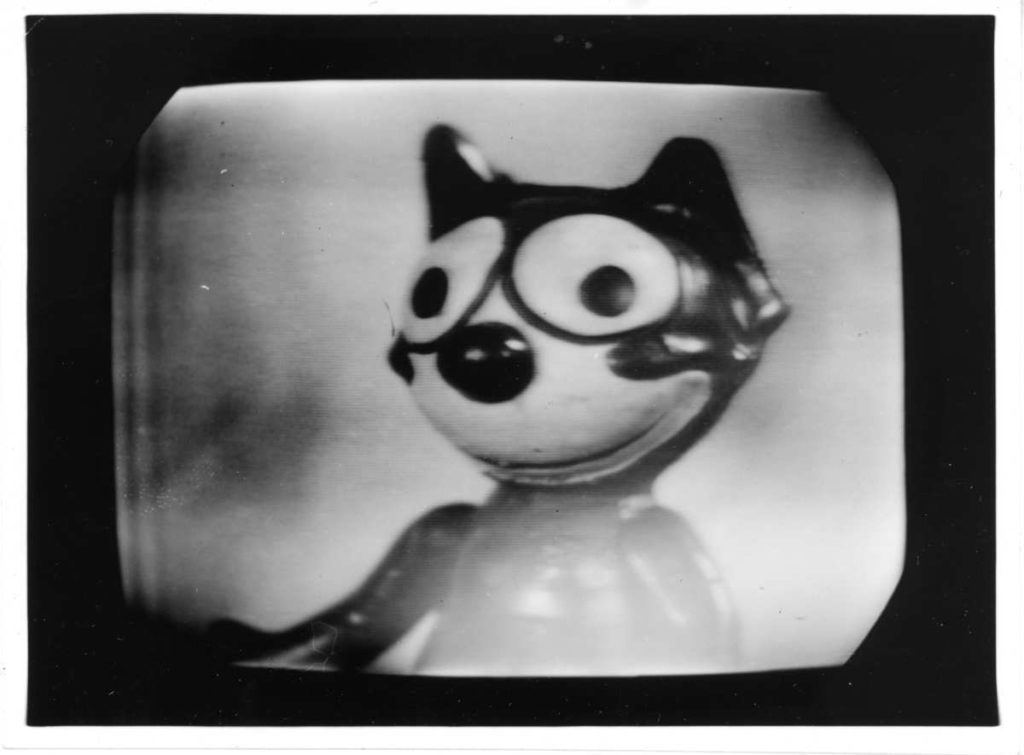
Below, the final step as the camera bodies are painted silver to denote the upgrade in resolution to 525 lines of resolution and this is a good look at the 1850A style six inch iconoscope tube.

Here are our last images which show up top, a 1941 “Miss Legs” contest and below, an early necessity in Studio 3H…Miss Patience, a mannequin that acts as a stand in under the blistering light needed for the iconoscope.
